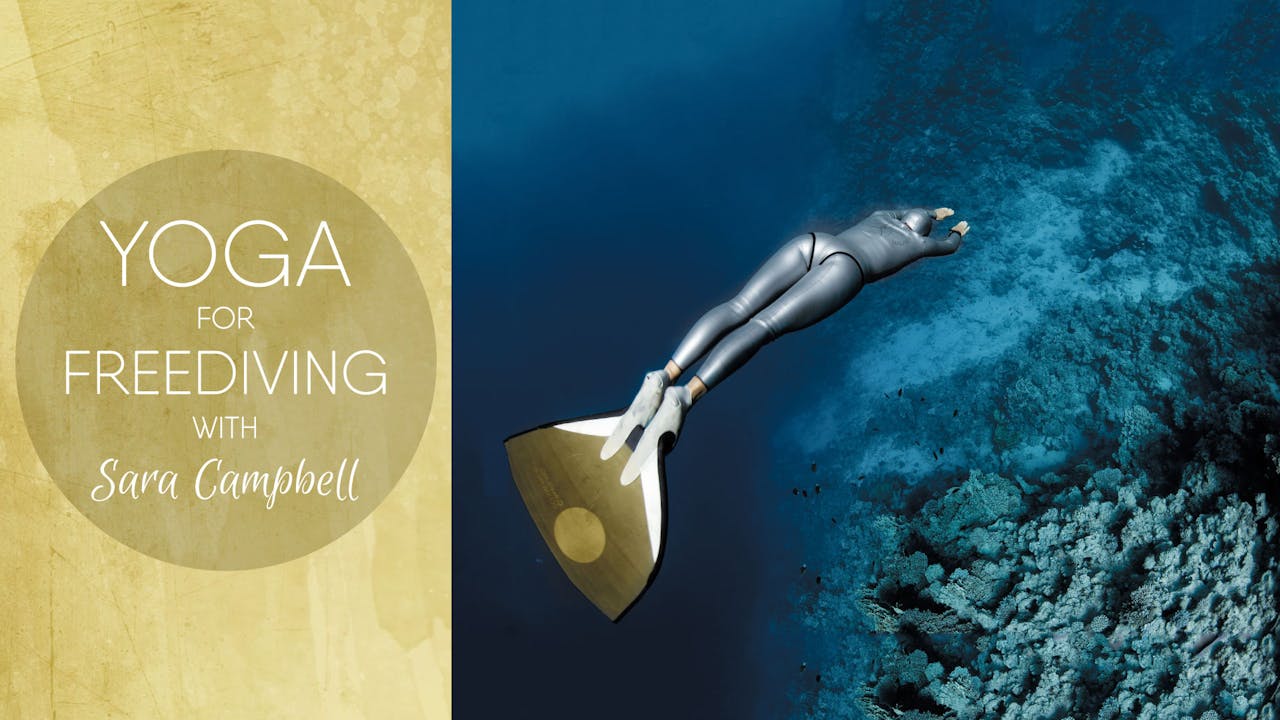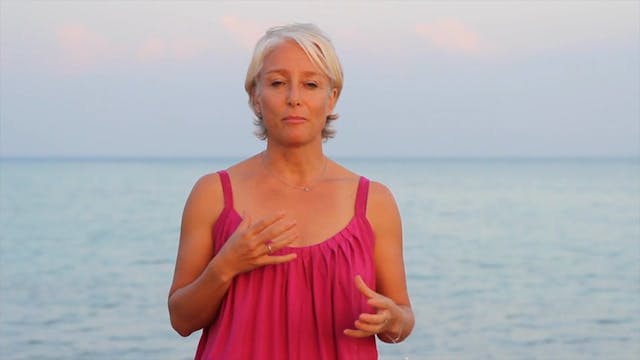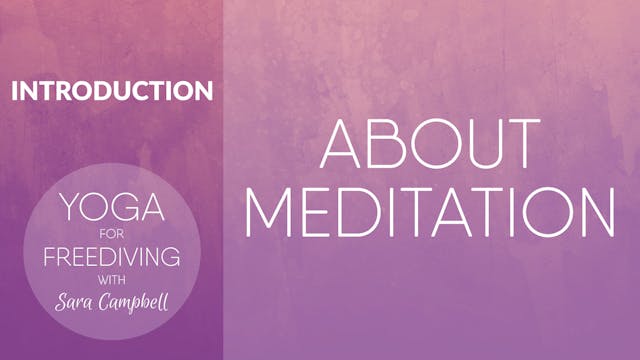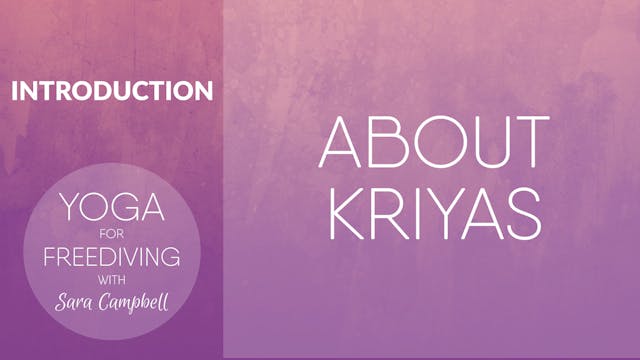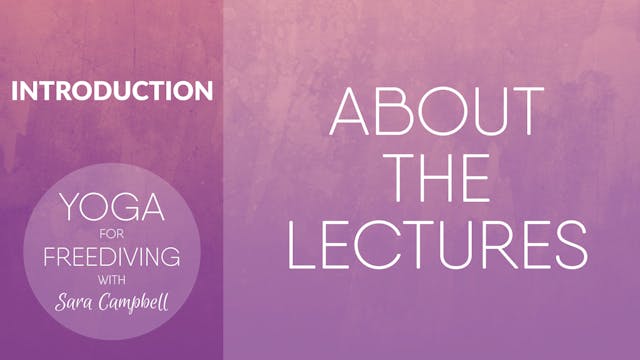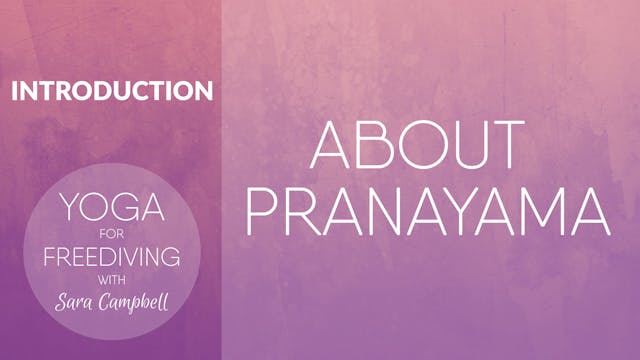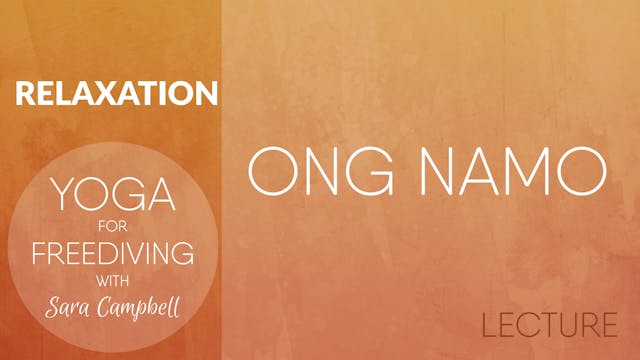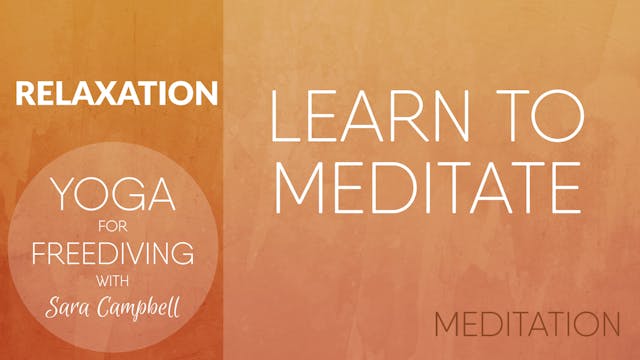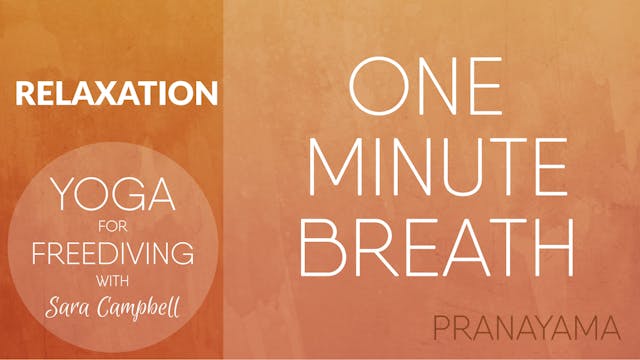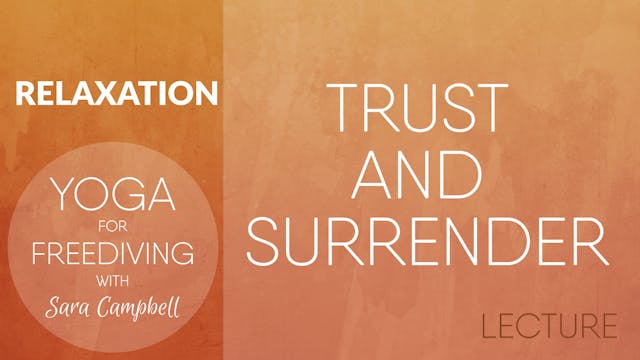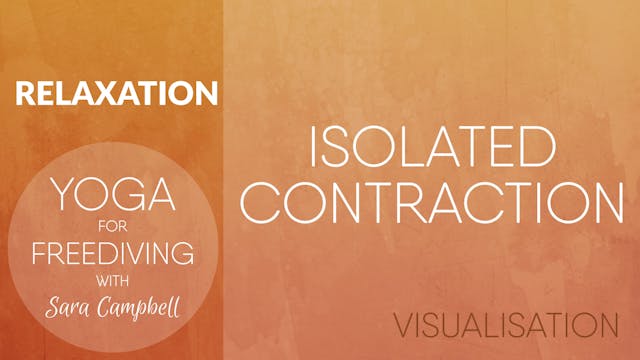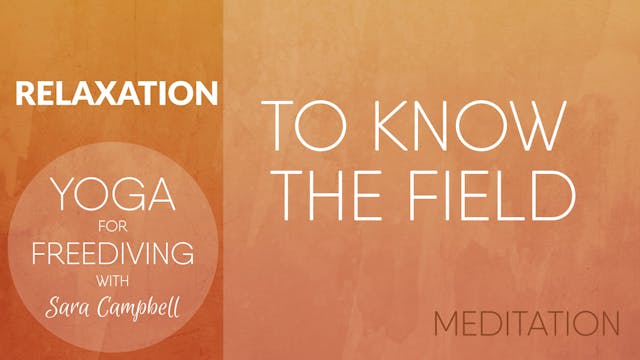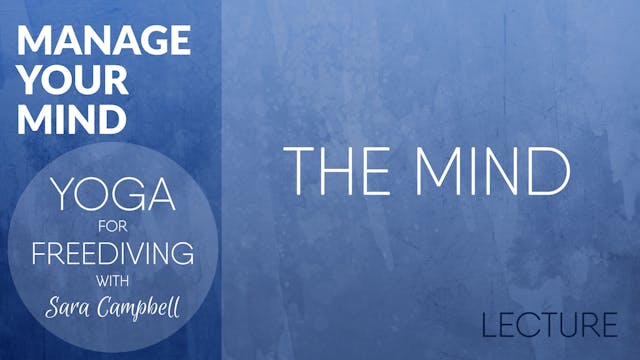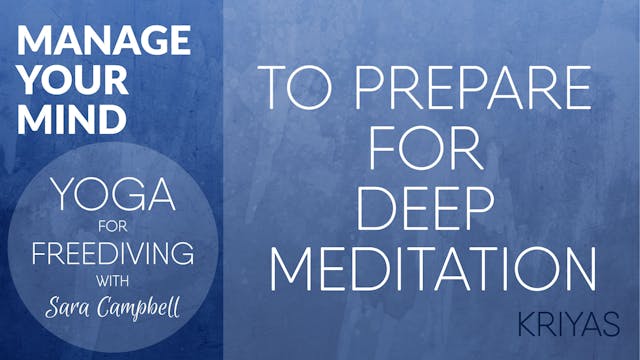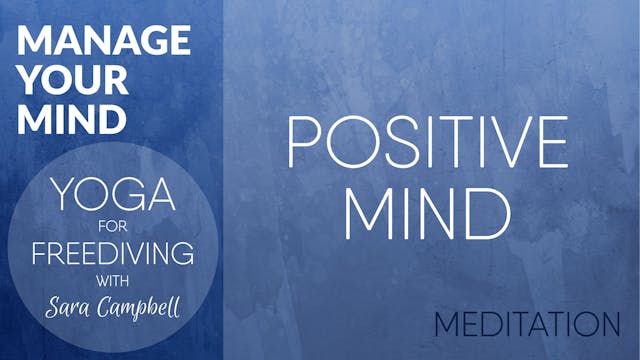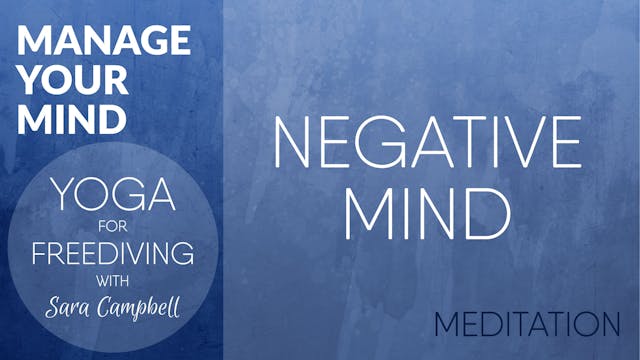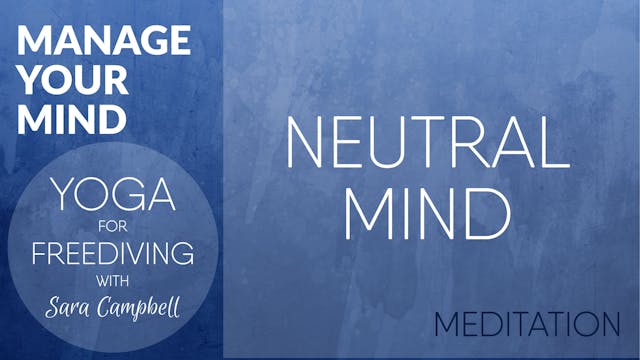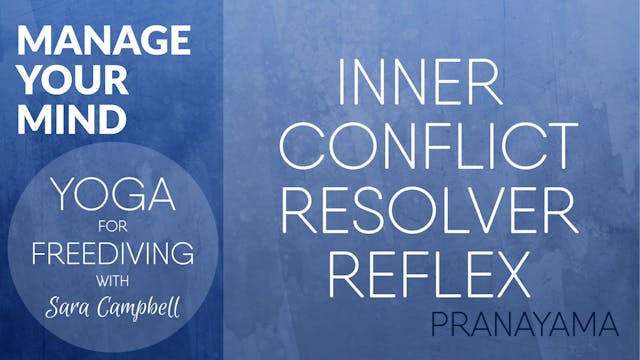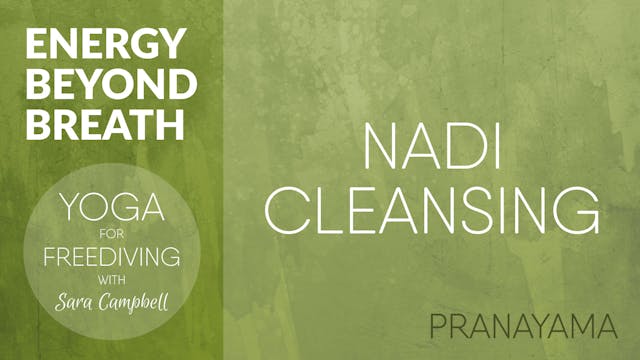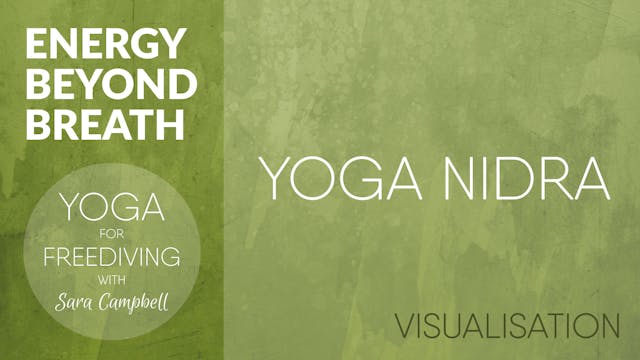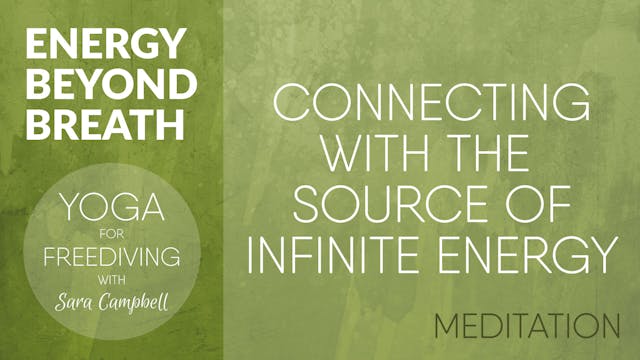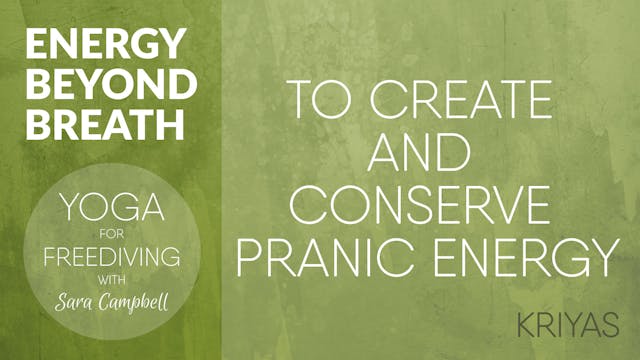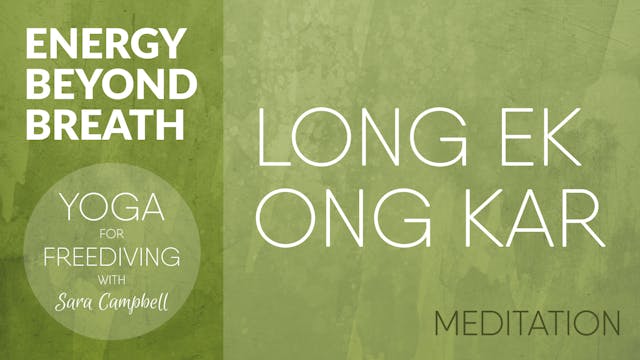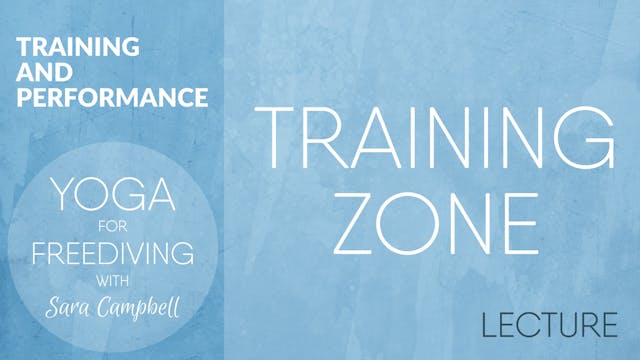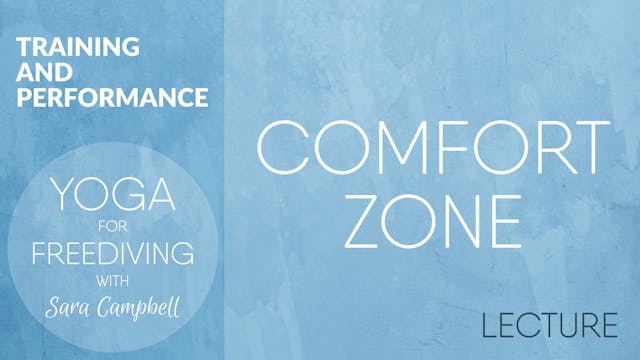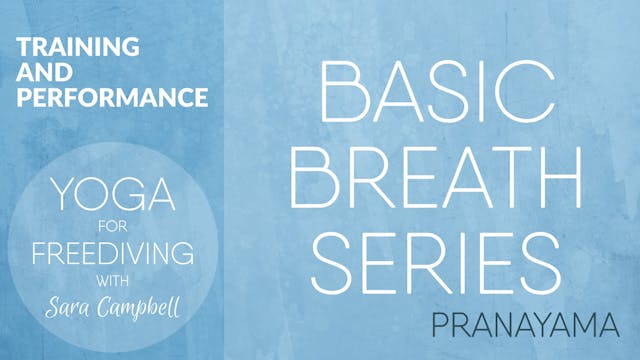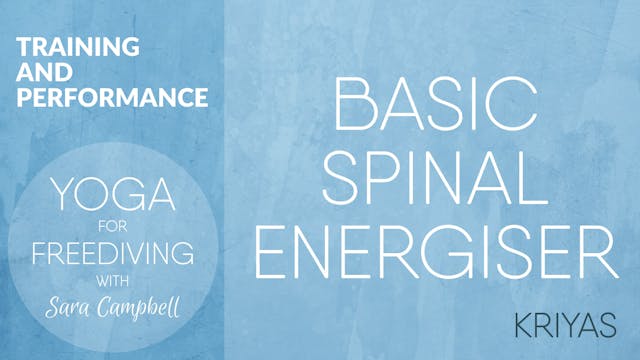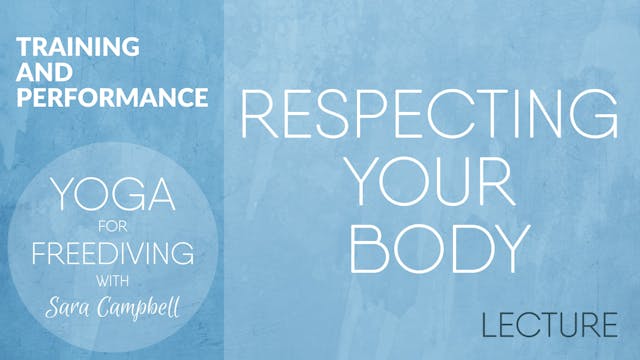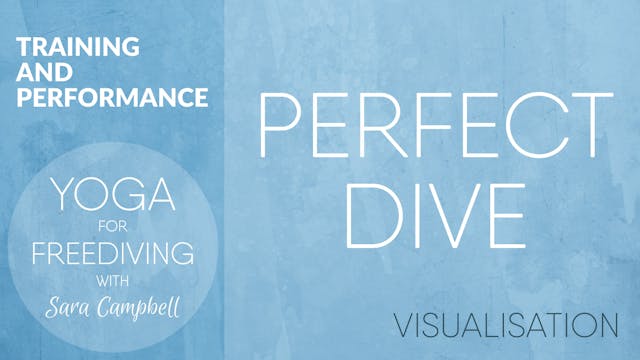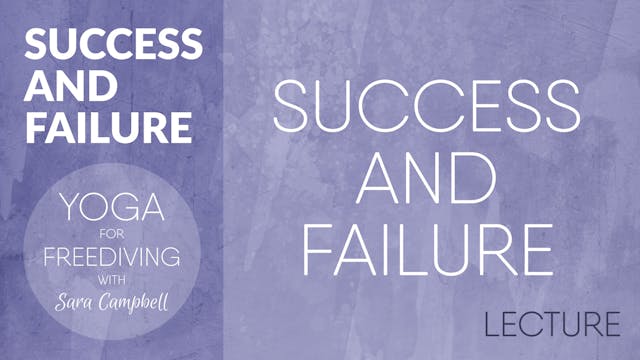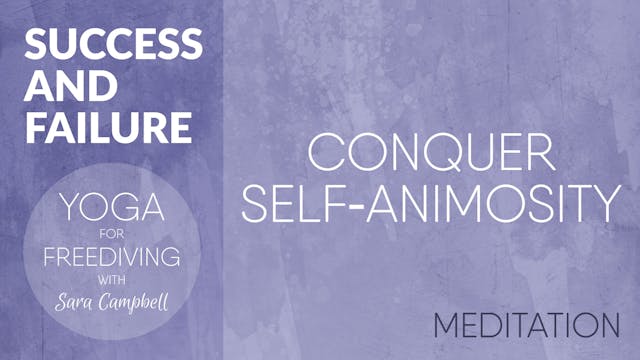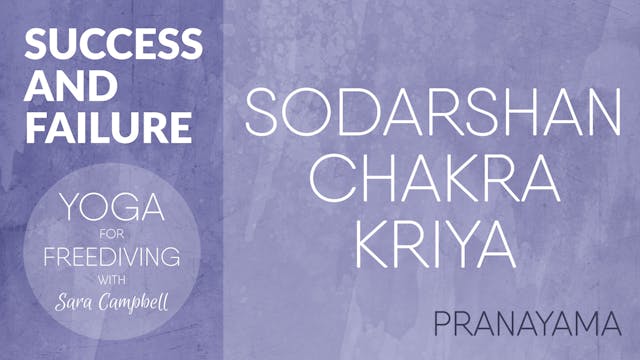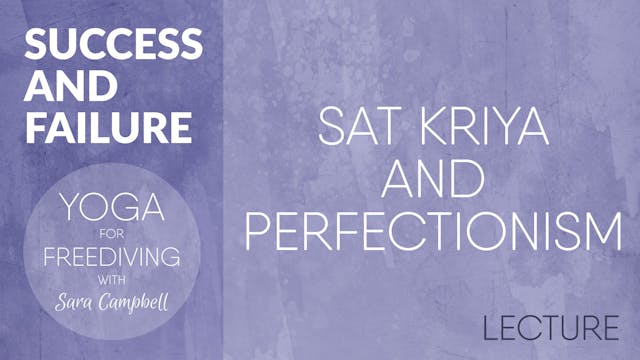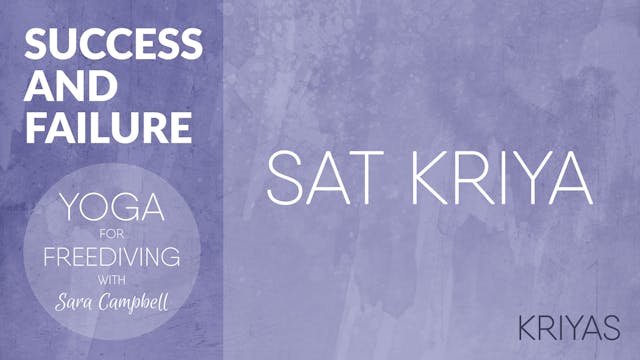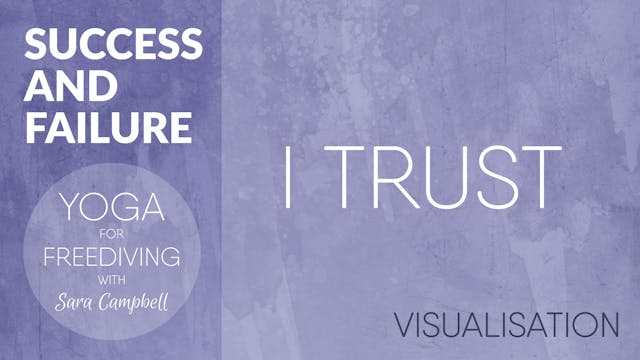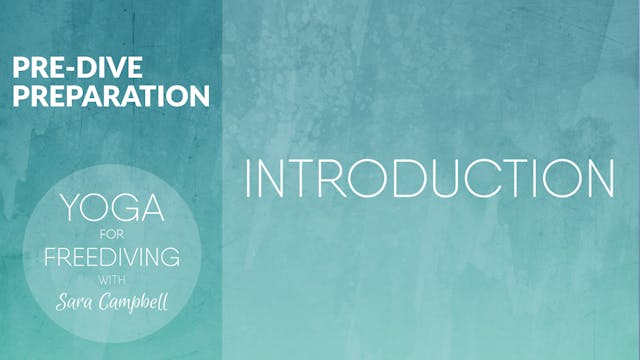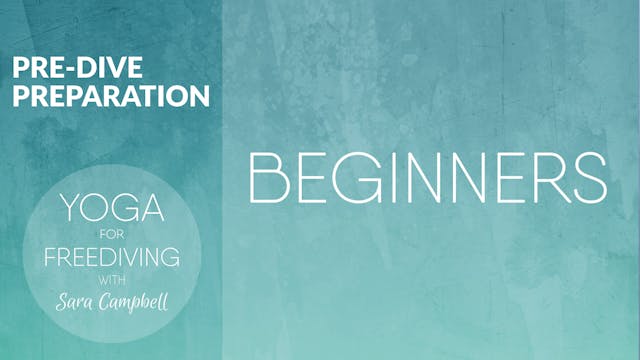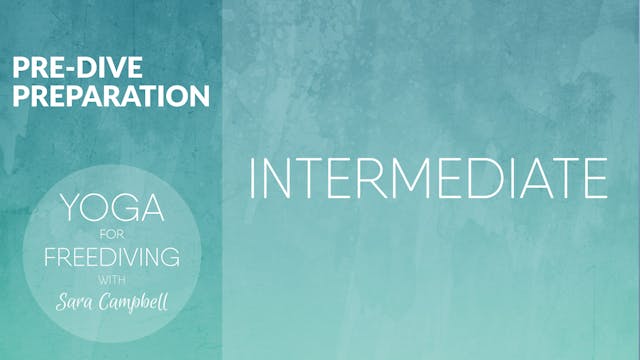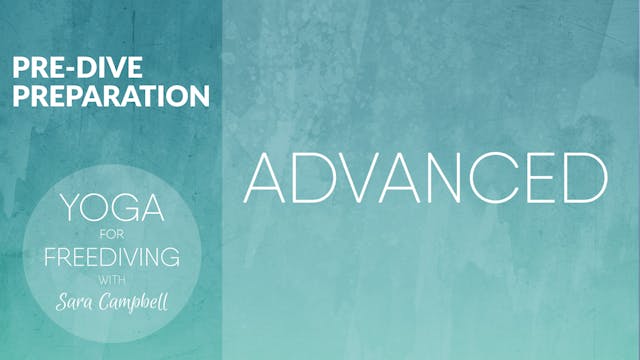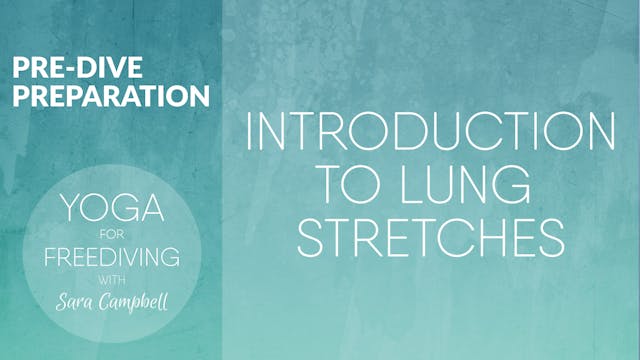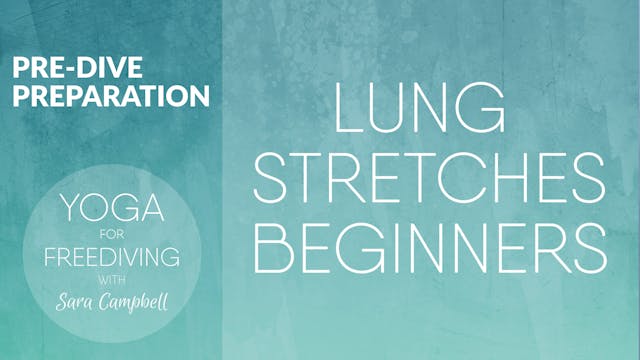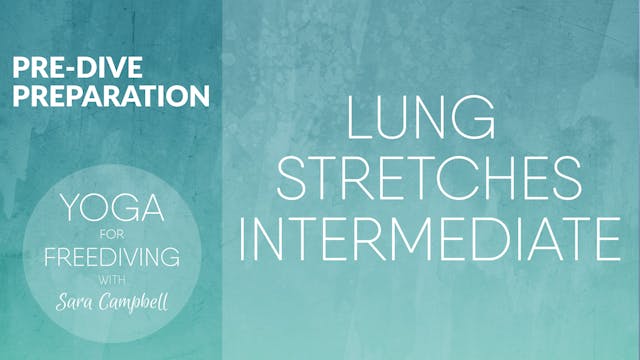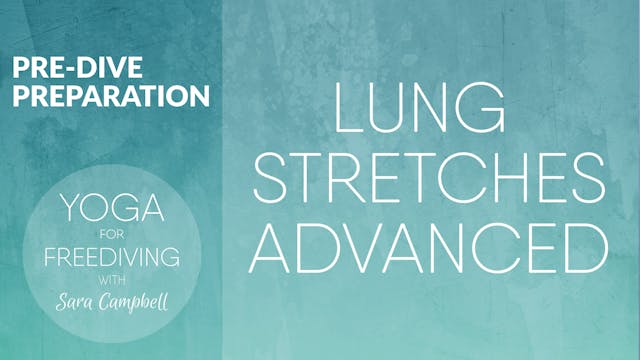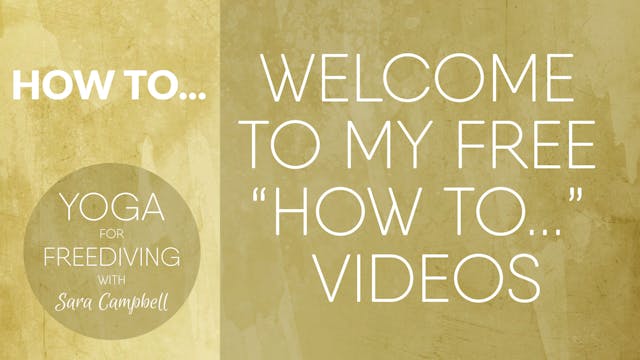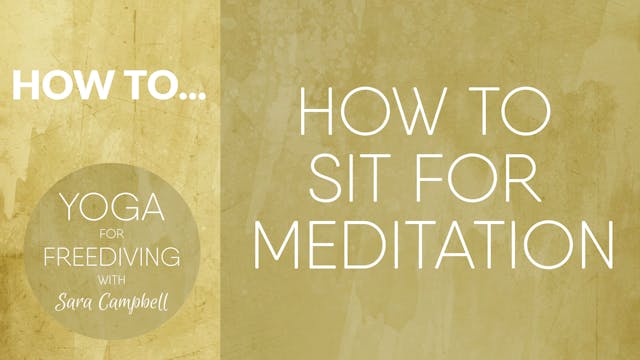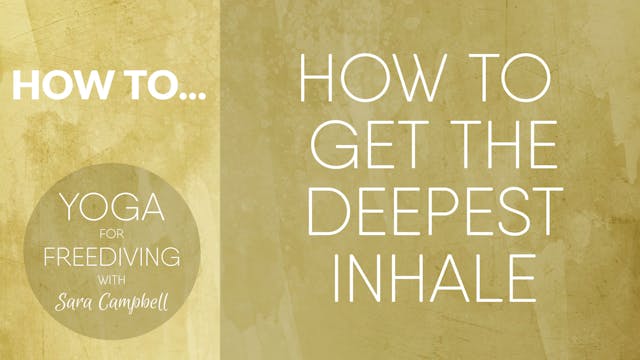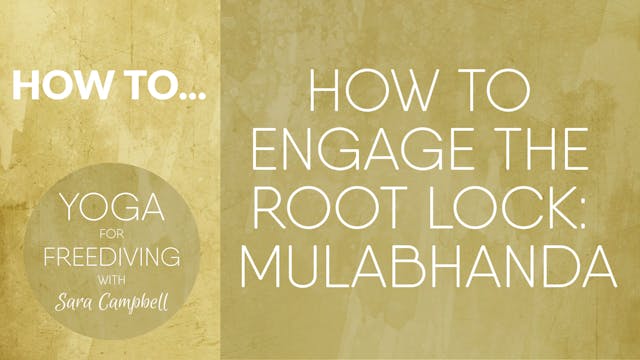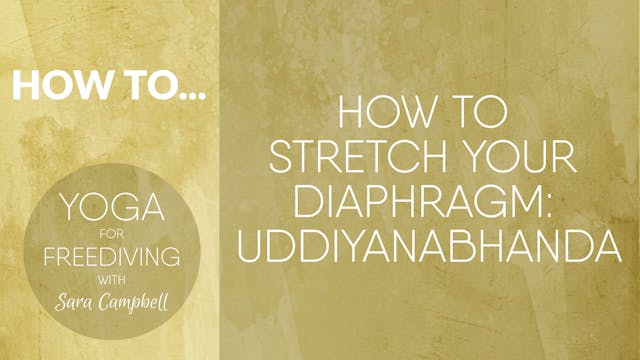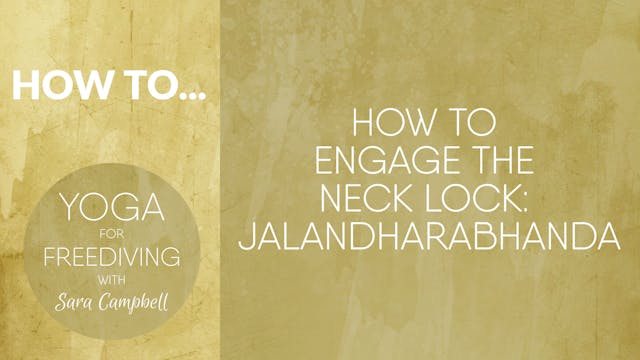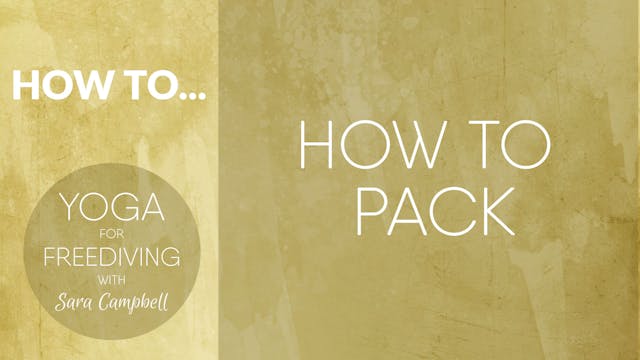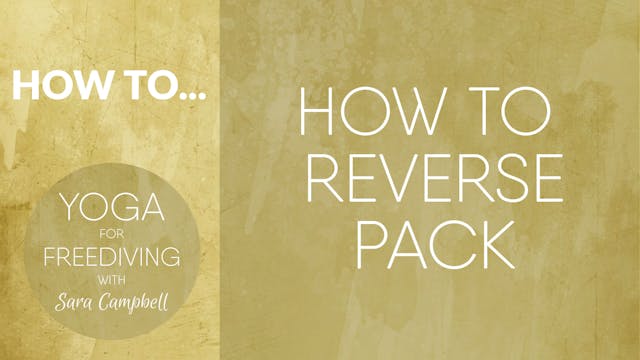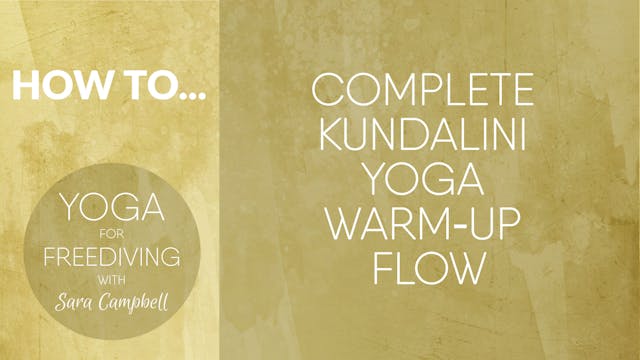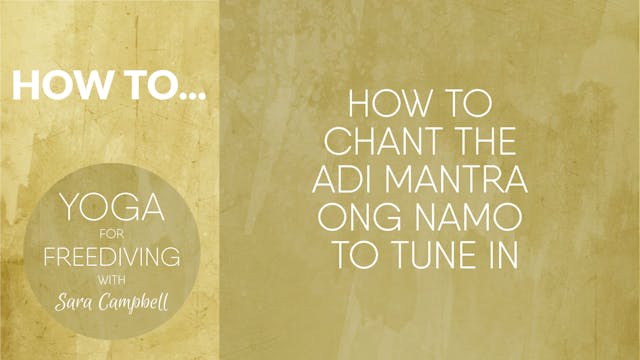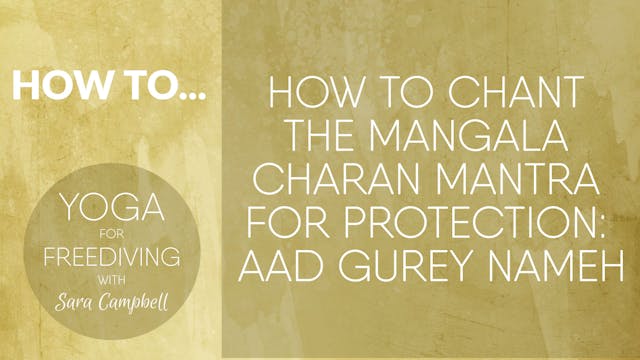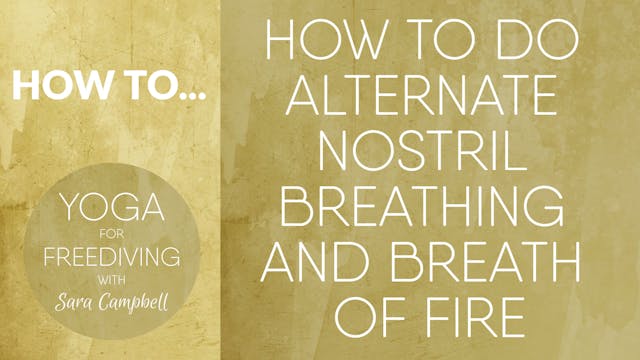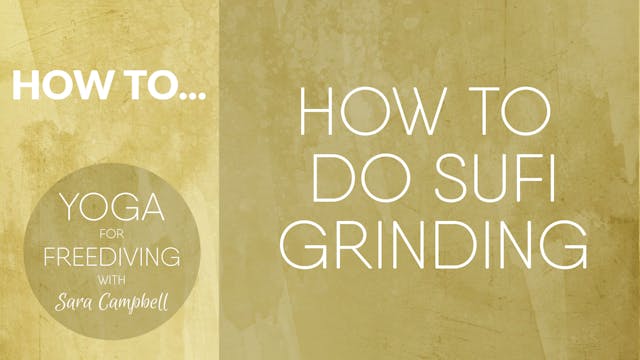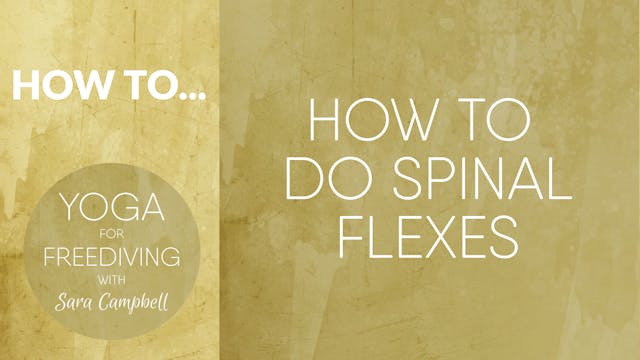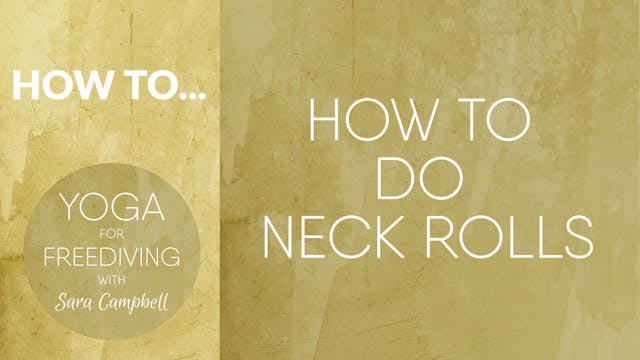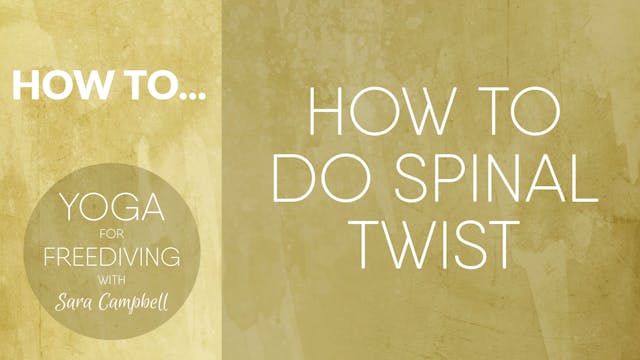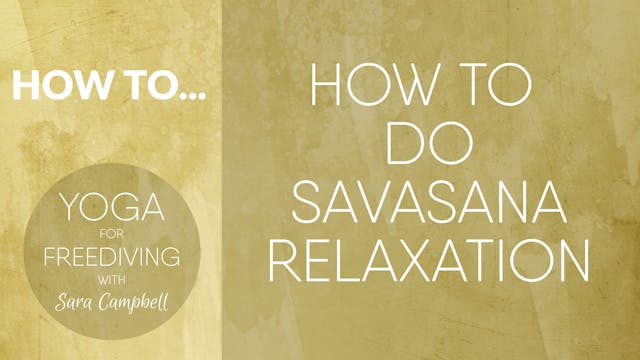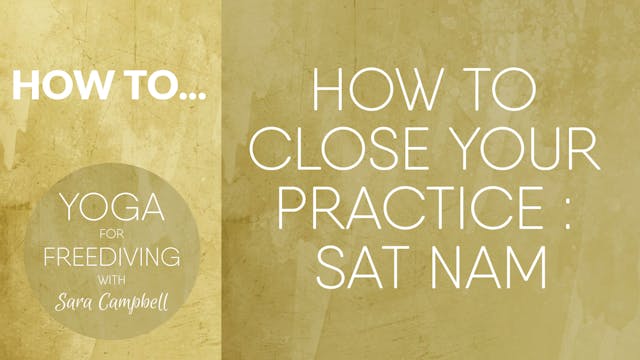Complete Yoga for Freediving Programme
Yoga for Freediving is a totally new concept in freediving and personal development.
This ground-breaking programme brings you six unique online courses, over 60 videos and 17 hours of meditation, pranayama, lectures, visualisations and more, which form the core of Sara's coaching programmes. It is these methods which enabled Sara to claim three World Records with just nine months of training - without forcing and without injury. Since then she has claimed a further World Record in Constant Weight and remains 'unofficially' the world's deepest woman with her dive to 104m Constant Weight.
These videos teach freediving as a philosophy rather than a series of techniques. They will help you to manage your mental processes, eliminate your fears, help you to focus, and will totally shift your perspective on yourself as a human being in relation to water.
-
About Meditation
ABOUT MEDITATION: If the mind is our most powerful servant, meditation is the way we ensure the servant receives clear instructions and does what we actually want him or her to do!
Without meditation our servant is free to do exactly what he wants, when he wants, and then we wonder why our di...
-
About Kriyas
ABOUT KRIYAS: The word 'kriya' means 'completed action'. It is therefore both a single exercise and a series of exercises that is designed to have a specific outcome. The kriyas in Kundalini Yoga work to direct energy within our body and mind by using specific breathing techniques combined with a...
-
About the Lectures
ABOUT LECTURES: This is as close to personal coaching with me as you can get without actually getting on a plane. These lectures form the basis of my teachings, primarily looking at, gaining awareness over, and learning to work with our minds, belief systems, and fears.
If you want to know ho...
-
About Pranayama
ABOUT PRANAYAMA: Pranayama are yogic breathing exercises based on ancient techniques and wisdom. 'Prana' refers both to our breath, and also to the life-force energy within and around us all. Pranayama therefore go beyond training simply our breath and breath hold capacity, but also work on how y...
-
RELAX 1. Lecture: Ong Namo
ABOUT THE ONG NAMO LECTURE: This is the first lecture I deliver to any student. It is also one of the most powerful lessons we can learn in our freediving.
We tend to dive in the same way that we approach life; that the harder we try, the more chance we have of succeeding. Changing this appro...
-
RELAX 2. Meditation: Learn to Meditate
ABOUT LEARN TO MEDITATE: Every action is the result of a thought, whether we are conscious of it or not. If we want to change the outcome of our actions, in this case, improve our dive performance, the most effective way is to begin to train our mind to think in different ways.
Learning to med...
-
RELAX 3. Pranayama: One Minute Breath
ABOUT ONE MINUTE BREATH: If you need to relax you have to be able to deal with your own stress. This pranayama is the most powerful stress-busting exercise you can do. It will also train your mind to focus, your heart to trust and will extend your breathhold! Seriously! All that in one exercise.
... -
RELAX 4. Lecture: Trust and Surrender
ABOUT TRUST AND SURRENDER: Trust and surrender are key concepts in great, safe, deep dives. It's easy to talk about them, but really getting yourself to a place where you embody them in your dives, is much harder.
We all know that in order to dive deep we need to confront and let go of our eg...
-
RELAX 5. Visualisation: Isolated Contraction
ABOUT ISOLATED CONTRACTIONS: As relaxation is such a crucial part of freediving, we need to learn to be as relaxed as possible throughout our body even though some parts of it are working physically and will be contracted.
This video will improve your body awareness, which is key to being abl...
-
RELAX 6. Meditation: To Know the Field
ABOUT TO KNOW THE FIELD: This is the meditation that helped me get my first three World Records! It is that powerful!
It uses visualisation, which is a powerful tool for reaching your goals, and connects you with your own energy and your own power. This is the power not to overcome others or t...
-
Manage Your Mind 1: Lecture - The Mind
-
Manage Your Mind 2: Kriya - To Prepare For Deep Meditation
-
Manage Your Mind 3: Meditation - Positive Mind
-
Manage Your Mind 4: Meditation - Negative Mind
-
Manage Your Mind 5: Meditation - Neutral Mind
-
Manage Your Mind 6: Pranayma - Inner Conflict Resolver Reflex
-
Manage Your Mind 7: Lecture - Mind, Body, Spirit
-
Energy Beyond Breath 1: Pranayama - Nadi Cleansing
ABOUT NADI CLEANSING : This pranayama is simple, yet powerful and effective. In order for our energy to flow, the channels that carry it need to be clear – these channels are called ‘nadis’, this exercise opens them up and clears out all the gunk
-
Energy Beyond Breath 2: Visualisation - Yoga Nidra
ABOUT YOGA NIDRA : This is a yogic form of self-hypnosis, whereby through a guided visualisation, you systematically relax and energise your body. This version is designed specifically for the needs of freedivers.
-
Energy Beyond Breath 3: Meditation - Connecting with the Source of Infinite Energy
ABOUT INFINITE ENERGY : A challenging pranayama-based meditation that energises our connection with the Universe, our navel point – the subtle umbilical cord through which Mother Nature continues to nourish us
-
Energy Beyond Breath 4: Kriya - To Create and Conserve Pranic Energy
ABOUT PRANIC ENERGY : One of Sara’s favourite kriyas, this targets our management of prana both on the physical, anatomical level through balancing the thyroid activity, but also on the energetic level by balancing our thought patterns and teaching us to trust and surrender
-
Energy Beyond Breath 5: Meditation - Long Ek Ong Kar
ABOUT LONG EK ONG KARS : One of the most powerful meditations, practiced every day by thousands of yogis, it systematically wakes up the Kundalini energy, our life-force. Through visualisation and control of the bhandas, we energise our main nadi, Sushumna, balance our energy, and strengthen our ...
-
Training and Performance 1: Lecture - Training Zone
-
Training and Performance 2: Lecture - Comfort Zone
-
Training and Performance 3: Pranayama - Basic Breath Series
-
Training and Performance 4: Kriya - Basic Spinal Energiser
-
Training and Performance 5: Lecture - Respecting Your Body
-
Training and Performance 6: Visualisation - Perfect Dive
-
Success & Failure 1: Lecture - Success and Failure
This video lays the foundation for this entire course - it explains that both success and failure are both simply concepts, not real in themselves, as our perception of what success and failure are, is both subjective, and subject to huge shifts as we ourselves change. You will learn that letting...
-
Success & Failure 2: Meditation - Conquer Self-Animosity
This course is all about polarised concepts and how they cripple us through expectations and fears. This meditation supports the Sat Kriya and Perfectionism lecture as it gives a practice tool to counter the tendency to put immense pressure on ourselves to always be the best. Invariably being the...
-
Success & Failure 3: Pranayama - Sodarshan Chakra Kriya
Sodarshan Chakra Kriya is one of the most powerful practices in Kundalini Yoga and it is THE meditation that I attribute my incredible freediving career to. It is a challenging and complex pranayama, and therefore, if this is your first Yoga for Freediving course, I recommend you start your first...
-
Success & Failure 4: Lecture - Sat Kriya and Perfectionism
In this lecture I talk about my own painful journey of attempting my first ever 40-day practice; the powerful lessons I learned, and the incredible, unforeseeable benefits I received from finally letting go of needing to be 'the best'.
-
Success & Failure 5: Kriya - Sat Kriya
Sat Kriya, along with Sodarshan (also in this course) is another one of the most powerful Kundalini practices, and was the first most important lesson that I gained from my own early yoga practice into the powerfully destructive tendency that we all have one some level, of perfectionism. Recognis...
-
Success & Failure 6: Visualisation - I Trust
This guided visualisation is one of my favourites - students ALWAYS enter the water in a super-chilled space and are amazed at how easy, relaxed and amazing their dives are after listening to this. As well as being an amazing preparation for training and performance dives, it's also an incredible...
-
PDP 1: Warm-ups Introduction
This video gives you an introduction to this routine to help you understand why it is so important and effective as a complement for all of your other training and pre-dive preparation.
-
PDP 2: Warm-ups Beginners
This beginners warm-up sequence is a fun but thorough work-out for all parts of the body that need to be prepared for diving. Focusing on the spine and upper body, they open up the subtle energy channels (meridians) to ensure optimal flow of life force and prana; they stretch and oxygenate the mu...
-
PDP 3: Warm-ups Intermediate
This warm-up routine builds on the beginners set, building up the stretches and encouraging you to go into the deeper connective tissues around the lungs, diaphragm and rib cage. The exercises will cleanse your blood stream and relax your mind as well as preparing your physical body for the deman...
-
PDP 4: Warm-ups Advanced
This advanced warm-up routine is for deep and competitive divers who really need to ensure they are ready for their dives the moment they enter the water. They are the exercises I did as preparation for my 100m+ dives, which I performed with no in-water warm-ups; proof that they really do work on...
-
PDP 5: Intro to Lung Stretches
This little introduction explains the importance of lung stretches, aiming to move freediving away from the damaging high-stress dives that result in injury, and encouraging us all to return to a healthy, balanced approach to our dives, which allows adaptation to occur at our individual rate. The...
-
PDP 6: Lung Stretches - Beginners
This first level of lung stretches is ideal for beginners as it teaches the basic stretch routine, preparing the lungs for the pressure of depths up to around 20-30m. It is recommended to master these stretches before progressing on to the more advanced routines, to strengthen your lung and airwa...
-
PDP 7: Lung Stretches - Intermediate
This intermediate lung stretch sequence builds on the first level, increasing the pressure and tension on both the inhale and exhale lung stretches. Divers who are reaching residual volume, ie reaching their frenzel failure depth, should ideally be working with these stretches.
-
PDP 8: Lung Stretches - Advanced
These advanced lung stretches are for divers who are using the mouthfill and are going to 50m and beyond. The pressure of these deep dives needs to be supported by dry exercises to ensure the lungs are flexible and strong and can handle the increasing pressure without suffering damage. It is advi...
-
Welcome to my free 'How to…' videos
ABOUT THE HOW TO... SERIES: This How to… series of videos contains bite-sized pieces of yogic and freediving wisdom, many of which were crucial in me diving to 104m on one breath!
DISCLAIMER: Yoga for Freediving courses and videos are not a freediving certification; they do not certify you to ...
-
How to Sit for Meditation
ABOUT SITTING: One of the greatest challenges to meditation is finding a comfortable sitting position. This short and simple video talks you through the options for all levels of flexibility.
The main focus for effective meditation is the position of your spine. As long as that is straight, i...
-
How to get the Deepest Inhale
ABOUT THE DEEPEST INHALE: Ever feel like you've taken your deepest inhale, but it's not quite deep enough? The chances are you are missing a very simple part of the inhale flow which will completely transform your final breath. Here I show you how.
For freedivers the final inhale is utterly c...
-
How to Engage the Root Lock : Mulabhanda
ABOUT THE ROOT LOCK: Mulabhanda, also known as mulbhand or the root lock, refers in western anatomy to the pelvic floor. This muscular lock which effectively closes off the lower end of the upper body, is essential in all parts of yoga, including meditation.
We use it to hold and direct energ...
-
How To Stretch your Diaphragm : Uddiyanabhanda
ABOUT DIAPHRAGM STRETCHING: Uddiyanabhanda relates to the diaphragm, as such it's the middle bhanda, between the root and the neck lock. In freediving, this little exercise can make or break depth progress.
Stretching uddiyanabhanda is one of the most important exercises you can do as a freedi...
-
How to Engage Neck Lock : Jalandharabhanda
ABOUT NECK LOCK: Jalandharabhanda, also called jalandabhand, or the neck lock, is essential in yoga and particularly in meditation.
It is also, for freedivers, known as the glottis - that tricky little bugger that you need to keep locked in order to keep your mouthfill.
Neck lock is taught...
-
How to Pack
ABOUT PACKING: Packing is a useful tool in freediving training. Packing must be introduced and used with CAUTION and respect as it carries certain risks and adverse effects for the freediver.
Packing when used in dry stretching routines is very useful for increasing the lung capacity, enablin...
-
How to Reverse Pack
ABOUT REVERSE PACKING: Reverse packing, as the name suggests, is the opposite of packing - and is essential for safe, deep diving.
Many people, particularly early on in their training, focus on packing in order to expand their lung volume. However, for anyone wanting to dive deep, reverse pac...
-
Complete Kundalini Yoga Warm-Up Flow
ABOUT THE FLOW: These warm-up exercises can be used to prepare for other practice, or can be used in their own right. This flow will leave you energised, yet relaxed.
I used and adapated these exercises to prepare myself for my deep freedives and I know they have helped all of my students to ...
-
How to chant the Adi Mantra Ong Namo to Tune In
ABOUT ONG NAMO: We begin every practice of Kundalini Yoga with the Adi Mantra: "Ong Namo Guru Dev Namo'. This mantra is the foundation for my four World Records in freediving.
I explain more about this magical mantra in my DEEP RELAXATION programme, but learning to chant it, and enjoying the ...
-
How to chant the Mangala Charan Mantra for Protection : Aad Gurey Nameh
ABOUT AAD GUREY: This mantra is often used after the Adi Mantra when tuning in for our practice, but it can be used alone and is great for protection.
Chanting mantra is not the same as singing. It doesn't matter if you have a good voice, or are in tune. It is about the vibrations you create ...
-
How to do Alternate Nostril Breathing and Breath of Fire
ABOUT PRANAYAMA: These two simple breathing exercises, or pranayamas, are two of the most important yoga breaths you will learn.
Alternate nostril breathing is great for bringing awareness to the breath, the sensations of the breath and for creating balance.
Breath of Fire is used to stimu...
-
How to do Sufi Grinding
ABOUT SUFI GRINDING: The poor Sufis…. Haha! Don't worry, no-one was harmed in the making of this video! :-)
Sufi grinding is my favourite yoga warm-up exercise and here I show you how to do it. It helps to soften and relax the whole of the spine, encourages deep, powerful breathing which clea...
-
How to do Spinal Flexes
ABOUT SPINAL FLEX: Spinal Flex exercises help us to systematically warm-up and wake up the spine. Our spine performs so many amazing functions for us throughout our daily lives that it deserves and needs to be looked after and given a bit of love. This is the perfect way.
Along with the other...
-
How to do Neck Rolls
ABOUT NECK ROLLS: Neck rolls are a simple part of our yoga and freediving stretches. We all carry stress and tension in our neck, throat, jaw, shoulders and upper back and this simple exercise can help us to identify and release some of it.
For freedivers suffering equalisation problems, the i...
-
How to do Spinal Twist
ABOUT SPINAL TWISTS: Let's do the twist! This yogic version of the twist focuses on the spine, this time increasing its flexibility through the vertical axis. It opens up our chest and shoulders, helps to stretch and tone the waist and gives all of your digestive organs a wonderful massage.
Al...
-
How to do Savasana Relaxation
ABOUT RELAXATION: Use this little video on its own when you want a quick time-out from your day, or a boost to your energy. It is essential we balance our stressful lives with regular relaxation - here's how!
It is recommended to practice this every day for 11 minutes if you're a man, and thr...
-
How to Close your Practice: Sat Nam
ABOUT SAT NAM: We end all of our yoga and meditation practices with Sat Nam. It means 'I am Truth' or 'Truth is what I am' and is a way to connect with our authentic self, beyond our perceptions and beliefs of who or what we think we should be.
The mantra also appears in many of the meditation...
-
Success & Failure - Six Week Programme.pdf
1.24 MB
-
Lectures to Go - Comfort Zone.mp3
20 MB
-
Visualisation to Go - The Perfect Dive.mp3
36.5 MB
-
Lectures to Go - Training Zone.mp3
16.4 MB
-
Lectures to Go - Respecting Your Body.mp3
20.5 MB
-
Training and Performance - Six Week Programme.pdf
1.16 MB
-
Energy Beyond Breath - Six Week Programme.pdf
1.15 MB
-
Manage Your Mind - Six Week Programme.pdf
422 KB
-
How to Manage Your Mind - article.pdf
401 KB
-
Visualisation to Go - Yoga Nidra.mp3
72.4 MB
-
Lectures to Go - Trust and Surrender.mp3
20 MB
-
Visualisation to Go - Isolated Contractions.mp3
81.4 MB
-
Visualisation to Go - I Trust.mp3
58.8 MB
-
Lectures to Go - Mind, Body, Spirit.mp3
36.7 MB
-
Lectures to Go - Sat Kriya and perfectionism.mp3
21.3 MB
-
Lectures to Go - Success and Failure.mp3
20.3 MB
-
Connecting with your source of infinite energy.pdf
71.7 KB
-
Creating and Conserving Pranic Energy.pdf
192 KB
-
Inner Conflict Resolver Reflex.pdf
55.2 KB
